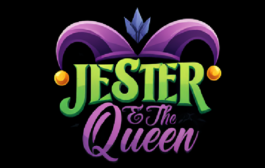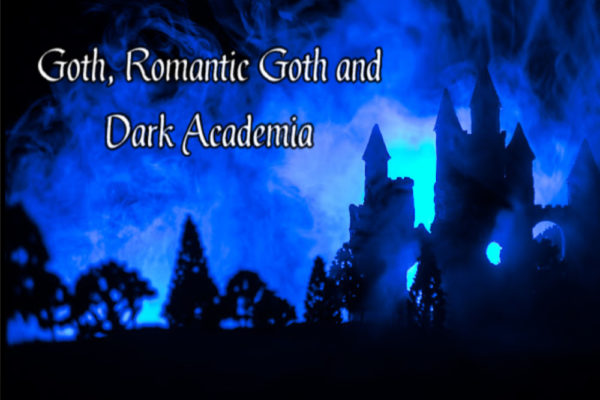Welcome, fellow wayfarers of the night, to a shadowy exploration of three aesthetics that whisper tales of darkness and intrigue: goth, romantic goth, and dark academia. I, your guide, am a seasoned traveler from the ’80s goth scene, a touch bohemian, a dash witchy, and forever smitten with the romantic side of the macabre. Think of me as your friendly neighborhood goth aunt, ready to share stories and unveil the secrets hidden within each aesthetic.
GOTH
First, let’s delve into the OG of them all – goth. It’s the rebellion that birthed black eyeliner and ripped jeans, the soundtrack of Siouxsie Sioux, Joy Division, and Bauhaus echoing through smoky clubs.
Rising from the Ashes
Goth emerged from the ashes of the 70s punk scene, carrying the torch of rebellion but in a decidedly more introspective, darkly romantic way. While punk was all about spitting in the face of the status quo, headfirst and middle finger raised, goth took a more introspective approach. It was a rebellion that whispered in the shadows, a quiet snarl hidden beneath layers of black lace and leather.
Think of it like this: Punk was the Molotov cocktail, exploding in a burst of rage and defiance. Goth was the slow burn, the smoldering ember that consumed everything from the inside out. It was about questioning societal norms, but not necessarily through outward aggression. It was about embracing the darkness within, the alienation, the melancholic beauty that most tried to hide.
Fishnets and Crucifixes
This isn’t to say that goths weren’t just as fierce as their punk counterparts. They just channeled their rebellion differently. They traded ripped jeans and safety pins for ripped fishnets and crucifixes. They swapped the raw energy of pogo-ing for the haunting sway of the goth dance. Their music wasn’t the brash, in-your-face anthems of punk, but the introspective poetry of Siouxsie and the Banshees, the dark melodies of The Cure, the haunting whispers of Bauhaus.
So, while punk was the punch to the face, goth was the slow, deliberate burial of the body. It was a rebellion that lingered, a darkness that seduced and consumed. This was where we reveled in the shadows, embraced introspection, and beauty, dipped in darkness, a celebration of the outsider finding beauty in the unconventional.
ROMANTIC GOTH
But wait, there’s a twist! Enter romantic goth, the ’80s evolution that craves beauty alongside the darkness. Think Victorian lace and velvet, corsets whispering tales of longing, and a touch of Anne Rice’s vampiric elegance. The music softens, replaced by the ethereal whispers of Cocteau Twins and the softer melodies of The Cure. It’s still goth but with a heart – a heart that aches with love and loss, dances with the supernatural, and finds solace in the moonlit embrace of drama.
From Punk Anthems to Melodic Whispers
In the 1980s, the raw energy of punk that birthed goth started to mellow. Think less ripped bondage pants and safety pins, more velvet mourning gowns and pensive stares. This shift reflected a desire to explore the complexities of darkness and emotion beyond just anger and rebellion.
Literary Vampires and Ethereal Sounds
Gothic novels like Anne Rice’s Vampire Chronicles and the Brontë sisters’ tales fueled a taste for theatricality, melodrama, and the supernatural. Lace, corsets, and a touch of vampiric allure became part of the aesthetic.
Musically, the scene moved from the intensity of Bauhaus to the haunting vocals and ethereal soundscapes of Cocteau Twins and Dead Can Dance. This resonated with a growing desire for a more introspective and romantic expression of darkness.
Death, Loss, and the Beauty of Shadows
Romantic goth wasn’t just about rebellion anymore. It was about embracing death, loss, and the complexities of human emotions, finding solace in the shadows with a touch of beauty and drama. Think less societal critique and more personal exploration.
Romantic goth encouraged individuality and creativity within the darkness. Experimentation with fashion, music, and art became a way to express one’s unique interpretation of the aesthetic. This focus on self-expression resonated with a generation seeking authenticity in a mass-produced world.
So, romantic goth wasn’t a sudden departure from its roots, but a nuanced evolution driven by cultural shifts, literary influences, and a yearning for a more personal and emotionally resonant darkness. It was a testament to the ever-changing nature of subcultures and their ability to adapt and evolve while staying true to their essence.
DARK ACADEMIA
Fast forward to the 2010s, and we stumble upon dark academia – the bookworm’s goth cousin, full of ivy-covered buildings, leather-bound tomes, and whispered secrets. Picture tweed jackets and turtlenecks, knee-high socks, and vintage blazers, worn by professors who moonlight as secret society members. The air is thick with the scent of old leather-bound books and dusty libraries, the soundtrack a symphony of quill pens scratching parchment and hushed whispers of forbidden knowledge. Dark academia is all about the pursuit of intellect, the thrill of the unknown, and basking in the mysterious allure of academia’s hidden corners. But where did it come from? And what keeps us enthralled by its mysterious charm?
A Literary Legacy
Many trace the origins of dark academia to Donna Tartt’s 1992 novel, “The Secret History.” This captivating tale of murder and obsession among classics students at an elite college set the stage for the genre’s signature elements: a romanticized view of academia, a fascination with the occult, and a touch of forbidden knowledge.
Tartt wasn’t alone. Gothic novels like Mary Shelley’s “Frankenstein” and Oscar Wilde’s “The Picture of Dorian Gray” explored similar themes, weaving academia with darkness and moral ambiguity. These literary forebears cast a long shadow, influencing generations of readers and laying the groundwork for the aesthetic’s modern resurgence.
A Tumblr-Fueled Frenzy
Fast forward to the early 2010s. Tumblr, a breeding ground for niche aesthetics, became a hotbed for dark academia. Users shared photos of grand libraries, vintage clothing finds, and handwritten poetry, fostering a sense of community and shared passion.
The platform’s visual nature amplified the aesthetic’s appeal. Images of candlelit studies, antique typewriters, and Latin quotations resonated with a generation yearning for intellectual pursuits and a romanticized escape from the digital age.
A Perfect Storm of Influences
Dark academia’s rise can’t be solely attributed to literature and social media. It coincided with a wider cultural fascination with true crime podcasts, historical mysteries, and academia-set films like “Dead Poets Society” and “The Perks of Being a Wallflower.”
The Harry Potter phenomenon, with its Hogwarts halls and secret societies, also played a role, priming audiences for a world where academia brushed shoulders with the magical and the macabre.
A Refuge for the Curious and Creative
But what truly makes dark academia tick? It’s more than just an aesthetic; it’s a feeling. It’s a space for the curious and the creatively inclined, where intellectual pursuits intertwine with a sense of mystery and belonging.
It’s the allure of forbidden knowledge, the thrill of late-night debates, the comfort of worn spines and crackling fireplaces. It’s a world where tweed jackets and ink-stained fingers become badges of honor, where the pursuit of learning is an act of rebellion against the mundane.
Dark academia’s popularity has spawned countless online communities, art projects, and even fashion trends. While some may dismiss it as a fleeting fad, its enduring appeal suggests it’s tapped into something deeper.
It’s a yearning for a simpler time, a celebration of the mind, and a reminder that the most captivating stories often lurk within the dusty shelves of old libraries and the quiet corners of academia.
So, whether you’re drawn to its intellectual allure or its gothic charm, dark academia offers a unique refuge, a world where the pursuit of knowledge and the embrace of the shadows go hand in hand. And who knows, maybe amidst its leather-bound tomes and whispered secrets, you’ll find your own piece of the dark academia magic.
But what binds these seemingly disparate aesthetics together? They’re all drawn to the intoxicating power of darkness, finding beauty in the shadows and solace in the unconventional. They’re literature lovers, history buffs, and art aficionados, united by a shared love for the strange and unusual. And yes, they’re all a delightful middle finger to the mainstream, a celebration of individuality that thrives in the flickering candlelight of self-expression.
Goth is the unapologetic rebel, romantic goth is the passionate storyteller, and dark academia is the bookish wanderer. Each offers a unique flavor, a different shade of darkness to embrace. So, where do you find yourself? Are you drawn to the raw honesty of goth, the captivating drama of romantic goth, or the intellectual allure of dark academia?
No matter your choice, remember, that the shadows are vast and welcoming. Embrace them, explore them, and let them weave their magic into your unique aesthetic. This is your adventure, your celebration of the beautifully dark and mysteriously yours. So, raise your glass of midnight wine, put on your favorite black attire, and let’s lose ourselves in the shadows together.
Until next time, fellow wayfarers, may your journeys be shrouded in wonder and your hearts forever touched by the allure of the dark.






